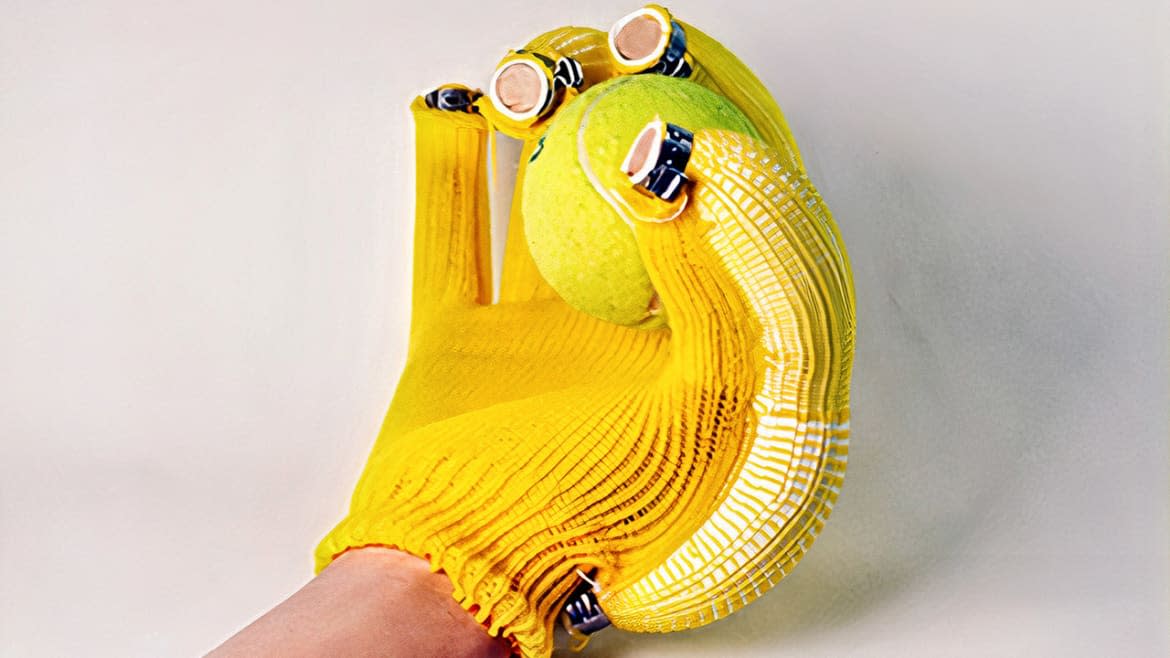This Robotic Glove from MIT Gives You Powerful Banana Fingers

The world of high-tech wearables isn’t just smartwatches and VR headsets. It’s also robotic gloves that make your fingers look like bananas.
At least that’s the case with a funky-looking device unveiled by MIT’s Computer Science and Artificial Intelligence Laboratory (CSAIL) in a paper published in CHI Conference on Human Factors in Computing Systems last week. The glove uses pneumatic actuators—or devices that convert compressed air into mechanical motion—to inflate each finger. Once ballooned up, the yellow knitted sleeve fitted over top of the inflated silicone tubes makes each finger look like a ripe banana.
While it looks silly, the glove actually has a lot of practical medical applications. For one, it can work as an assistive tool for those who have experienced trauma in their hands and have limited mobility in their fingers. This allows wearers to more easily grab objects that they wouldn’t otherwise be able to. The design can also be used to create sleeves to help users with limited mobility in their joints bend their elbows and knees.
“Soft pneumatic actuators are intrinsically compliant and flexible, and combined with intelligent materials, they’ve become a necessary force in many robots and assistive technologies—and rapid fabrication, with our design tool, can hopefully increase ease and ubiquity,” Yiyue Luo, CSAIL PhD student and lead author of the study, said in a press release.
Fascinatingly, the glove also utilizes an automated knitting process, which allows a human to simply input the stitch design into a machine that then knits the fabric to their specifications. The material the machine uses is called conductive yarn, a sensing fabric that allows the robotic devices to “feel” what it touches. This means it can automatically respond to sensory information and detect nearby objects, allowing it to do things like inflate to grab something nearby or respond to the bend of a joint. This opens the door to a ton of other applications like automated robots that can grab, flex, and even move around.
“Our software tool is fast, easy to use, and it accurately previews users' designs, allowing them to quickly iterate virtually while only needing to fabricate once,” Andrew Spielberg, post-doctoral researcher in materials science and mechanical engineering at Harvard University and co-author of the paper, said in the press release.
However, Spielberg cautioned that the technology still “requires some trial-and-error from humans.” As sophisticated as the sensory fabric is, the AI behind it still needs to learn when and when not to inflate. “That’s the next frontier,” he adds.
Got a tip? Send it to The Daily Beast here
Get the Daily Beast's biggest scoops and scandals delivered right to your inbox. Sign up now.
Stay informed and gain unlimited access to the Daily Beast's unmatched reporting. Subscribe now.

